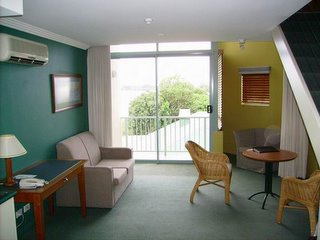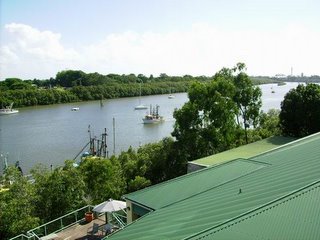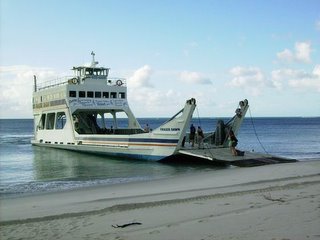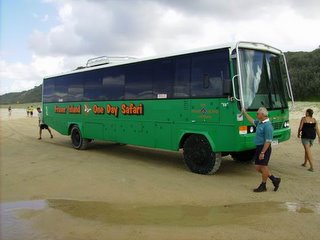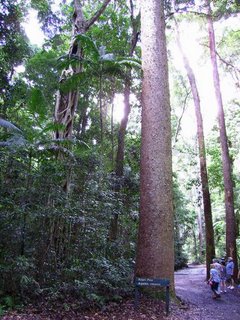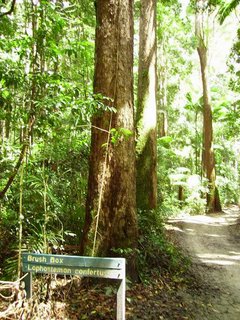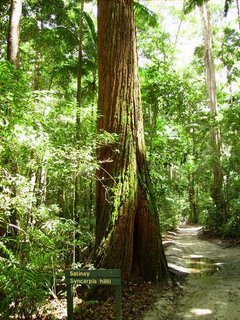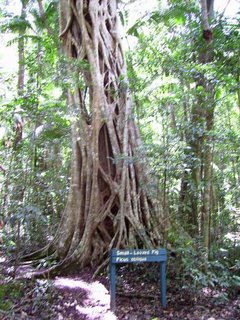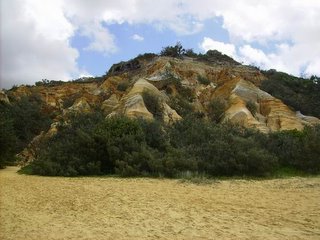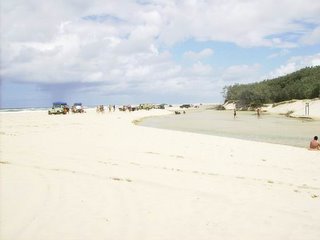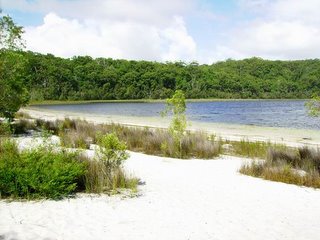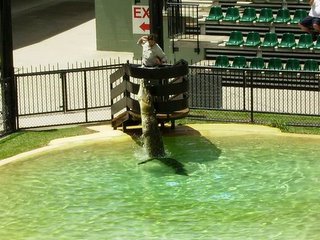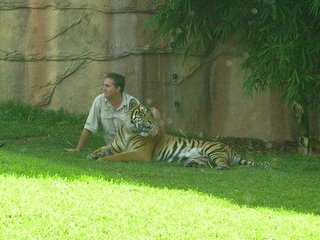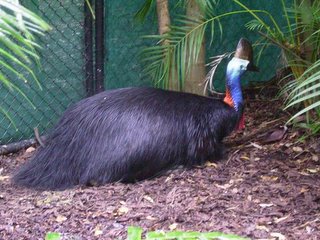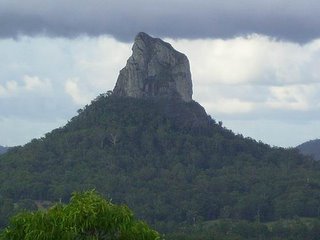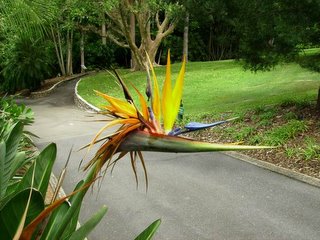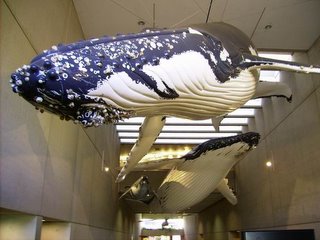Townsville (for Feb. 25)
We had a couple of light rain showers yesterday evening and at least one heavy shower overnight. This morning we had overcast skies with pretty steady precipitation, varying from drizzle to moderate rain, until 150 km out. From there it got more and more sunny until it was almost clear when we arrived in Townsville, 400 km from our starting point.
The terrain was quite flat all day, but there were always a few low mountains/high hills nearby. They are rarely in ranges, like we are used to in the Rockies, but usually stand alone or in clusters of a handful or so. I suspect they might be volcano remnants like the Glass Mountains that we passed a few days ago.
The main crop north of Mackay was sugar cane until about the same place as the rain stopped at 150 km out. From there it was mostly cattle grazing in scrub forest and open meadows until about 100 km south of Townsville when we ran into mostly sugar cane again. Another common crop was mango orchards.
 We stopped for a picnic lunch in Bowen. There we observed our first ‘stinger net’. We are now into the area where jelly fish are common from October to April. Contact with one can cause a pretty severe burn-like injury and even death in the worst cases. Some beaches have a net that is supposed to protect part of the beach for swimmers.
We stopped for a picnic lunch in Bowen. There we observed our first ‘stinger net’. We are now into the area where jelly fish are common from October to April. Contact with one can cause a pretty severe burn-like injury and even death in the worst cases. Some beaches have a net that is supposed to protect part of the beach for swimmers. 
 One other interesting discovery was of another variety of fig tree that sends runners down to the ground that develop into supplementary trunks.
One other interesting discovery was of another variety of fig tree that sends runners down to the ground that develop into supplementary trunks.
They say they also grow watermelons and rockmelons around here. (If a rockmelon isn’t the same as a cantaloupe, it is pretty darn close.) We saw a watermelon in a roadside produce store that was more than 2 feet long! It could feed an army.
 In Townsville, we drove to the top of Castle Hill in the center of town. What a view! From there we went down to ‘The Strand,’ a park along the beach. It was one of the nicest such parks we have seen.
In Townsville, we drove to the top of Castle Hill in the center of town. What a view! From there we went down to ‘The Strand,’ a park along the beach. It was one of the nicest such parks we have seen. 
The beach was closed due to stingers, but there were two pools along the strand, at least one of which was saltwater. There was also a great water park for kids, including a huge bucket that filled until it tipped and dumped a torrent of water on the kids below. Another great feature was a number of free built-in gas barbecues.
The terrain was quite flat all day, but there were always a few low mountains/high hills nearby. They are rarely in ranges, like we are used to in the Rockies, but usually stand alone or in clusters of a handful or so. I suspect they might be volcano remnants like the Glass Mountains that we passed a few days ago.
The main crop north of Mackay was sugar cane until about the same place as the rain stopped at 150 km out. From there it was mostly cattle grazing in scrub forest and open meadows until about 100 km south of Townsville when we ran into mostly sugar cane again. Another common crop was mango orchards.
 We stopped for a picnic lunch in Bowen. There we observed our first ‘stinger net’. We are now into the area where jelly fish are common from October to April. Contact with one can cause a pretty severe burn-like injury and even death in the worst cases. Some beaches have a net that is supposed to protect part of the beach for swimmers.
We stopped for a picnic lunch in Bowen. There we observed our first ‘stinger net’. We are now into the area where jelly fish are common from October to April. Contact with one can cause a pretty severe burn-like injury and even death in the worst cases. Some beaches have a net that is supposed to protect part of the beach for swimmers. 
 One other interesting discovery was of another variety of fig tree that sends runners down to the ground that develop into supplementary trunks.
One other interesting discovery was of another variety of fig tree that sends runners down to the ground that develop into supplementary trunks.They say they also grow watermelons and rockmelons around here. (If a rockmelon isn’t the same as a cantaloupe, it is pretty darn close.) We saw a watermelon in a roadside produce store that was more than 2 feet long! It could feed an army.
 In Townsville, we drove to the top of Castle Hill in the center of town. What a view! From there we went down to ‘The Strand,’ a park along the beach. It was one of the nicest such parks we have seen.
In Townsville, we drove to the top of Castle Hill in the center of town. What a view! From there we went down to ‘The Strand,’ a park along the beach. It was one of the nicest such parks we have seen. 
The beach was closed due to stingers, but there were two pools along the strand, at least one of which was saltwater. There was also a great water park for kids, including a huge bucket that filled until it tipped and dumped a torrent of water on the kids below. Another great feature was a number of free built-in gas barbecues.

